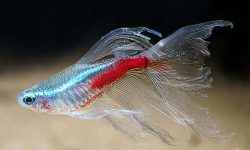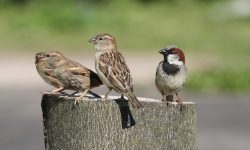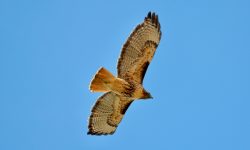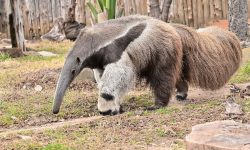The red-tailed hawk, known for its striking appearance and impressive hunting skills, is one of the most iconic birds of prey in North America. This magnificent raptor can be found in a wide variety of habitats across the continent, from deserts and forests to grasslands and urban areas.
In this comprehensive guide, we will explore everything you need to know about the red-tailed hawk, including its physical characteristics, habitat, diet, behavior, and conservation status. Let’s dive in and discover why this bird continues to captivate birdwatchers, nature lovers, and wildlife enthusiasts alike.
What is a Red Tailed Hawk?
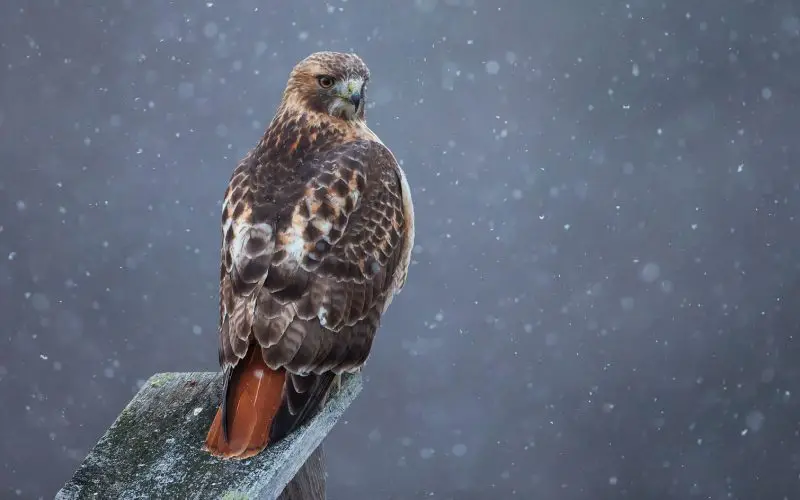
The red-tailed hawk (Buteo jamaicensis) is a large raptor and a member of the Buteo genus, which includes several species of hawks known for their broad wings and stocky bodies. The red-tailed hawk is one of the most commonly seen birds of prey in North America, with a wide distribution range stretching from southern Canada down to Panama.
Physical Characteristics of the Red Tailed Hawk
The red-tailed hawk is instantly recognizable due to its distinctive physical features. Here are the key characteristics that make this bird stand out:
Size and Shape
-
Wingspan: The red-tailed hawk has an impressive wingspan, ranging from 4.5 to 5 feet (1.4 to 1.5 meters).
-
Body Length: These hawks typically measure between 18 and 26 inches (46 to 66 cm) in length.
-
Weight: Adult red-tailed hawks weigh between 1.5 to 3.5 pounds (0.7 to 1.6 kg), with females generally being larger than males.
Coloration and Markings
-
Tail: As the name suggests, the red-tailed hawk is best known for its reddish-brown tail, which is a distinguishing feature. The tail can range in color from rusty red to orange, and it is often streaked or banded.
-
Plumage: The bird’s plumage is mostly brown and white. The upperparts are brown with darker markings, while the underparts are typically lighter, with a white belly and speckled chest.
-
Eyes and Beak: The red-tailed hawk has a hooked beak and sharp talons, perfect for grasping and tearing apart its prey. Its yellowish eyes give it a fierce, predatory look.
Types of Red Tailed Hawks
There are several subspecies of the red-tailed hawk, each exhibiting slight variations in size, color, and habitat preference. Some of the most notable subspecies include:
-
Eastern Red-tailed Hawk (Buteo jamaicensis borealis): This subspecies is the largest and most commonly encountered across eastern North America.
-
Western Red-tailed Hawk (Buteo jamaicensis calurus): Found primarily in the western United States, this subspecies has a darker plumage.
-
Harlan’s Hawk (Buteo jamaicensis harlani): Known for its darker, almost black feathers, Harlan’s hawk is found in the northern parts of the U.S. and Canada.
Red Tailed Hawk Habitat and Range
The red-tailed hawk is incredibly adaptable and can thrive in a wide variety of habitats. From dense forests to open fields and even urban areas, this hawk is a common sight across much of North America. Here’s a closer look at its preferred habitat:
Preferred Habitats
-
Open Woodlands: Red-tailed hawks are often seen in forests with open canopies, which provide them with ample hunting opportunities.
-
Grasslands and Farmlands: These areas offer a perfect environment for hunting small mammals like rodents, which are a primary food source.
-
Urban Areas: Interestingly, red-tailed hawks have adapted well to urban life. They can be found hunting in city parks and even nesting on tall buildings and radio towers.
-
Desert Landscapes: In the southwestern U.S., red-tailed hawks are commonly found in desert areas where they prey on lizards and small mammals.
Geographic Range
The red-tailed hawk is found across most of North America, from southern Canada to Panama. Its range includes parts of the United States, Mexico, and Central America. These hawks are migratory, with northern populations moving south for the winter, while southern populations remain year-round.
Diet and Hunting Behavior
As a carnivore, the red-tailed hawk is an expert hunter, relying on its keen eyesight and powerful talons to catch its prey. The hawk’s diet consists mostly of small mammals, but it also feeds on birds, reptiles, and insects. Here’s a deeper look at what the red-tailed hawk eats and how it hunts.
Primary Prey
-
Rodents: Mice, voles, and squirrels make up a significant portion of the red-tailed hawk’s diet. These small mammals are abundant in many of the hawk’s preferred habitats.
-
Rabbits: Larger prey, like rabbits, are also part of the hawk’s diet, especially in open fields and grasslands.
-
Birds: Occasionally, the red-tailed hawk will hunt other birds, including pigeons, quails, and doves.
-
Reptiles and Amphibians: In some regions, lizards, snakes, and frogs are an important food source, especially in desert environments.
Hunting Techniques
Red-tailed hawks are known for their impressive hunting techniques. They typically hunt from a perch, scanning the ground below for potential prey. Once they spot something, they use their powerful talons to swoop down and capture it in a lightning-fast attack. Their keen eyesight allows them to spot prey from great distances, and their agility in flight ensures they can quickly close the distance between them and their target.
Flight Style
The red-tailed hawk’s flight is characterized by slow, graceful wing beats interspersed with gliding. They are often seen soaring high in the sky, circling in thermal updrafts as they survey the landscape below. This soaring behavior is not just for navigation; it also helps them spot potential prey from high above.
Feeding Habits
Once a red-tailed hawk captures its prey, it typically returns to a perch or a tree to consume it. The hawk uses its sharp beak to tear apart the animal, eating both the meat and the internal organs. In some cases, the hawk will store leftover food for later consumption.
Behavior and Reproduction
Red-tailed hawks are solitary birds, particularly outside of the breeding season. They are highly territorial and will defend their nesting sites and hunting grounds aggressively.
Mating and Nesting
-
Courtship: During the breeding season, red-tailed hawks engage in elaborate courtship displays, including aerial acrobatics. The male often performs a series of flight maneuvers to impress the female.
-
Nesting Sites: Red-tailed hawks build large nests made of sticks and branches, typically in tall trees or on cliffs. In urban areas, they may even nest on tall buildings or man-made structures.
-
Eggs and Incubation: The female typically lays 2 to 3 eggs, which are incubated for about 28 to 35 days. Both parents take turns incubating the eggs, with the female spending more time on the nest.
-
Chicks: Once the eggs hatch, the parents feed the chicks a diet of small mammals and birds. The chicks are born covered in white down and gradually develop their feathers. They fledge (leave the nest) after about 6 to 7 weeks.
Communication
Red-tailed hawks communicate through a variety of vocalizations, including a distinctive high-pitched scream that is often associated with the species. This call is used to mark territory and communicate with other hawks.
Conservation Status
The red-tailed hawk is currently listed as a species of “Least Concern” by the International Union for Conservation of Nature (IUCN), meaning it is not facing immediate threats to its population. However, like many other birds of prey, the red-tailed hawk has faced challenges in the past due to habitat loss and the use of pesticides.
Threats and Challenges
-
Habitat Loss: Urbanization and agricultural development continue to reduce available habitats for many bird species, including the red-tailed hawk.
-
Pesticides: The use of pesticides can harm red-tailed hawks by contaminating their food sources and affecting their reproductive success.
Conservation Efforts
Various organizations and government agencies work to protect the red-tailed hawk and its habitats. Efforts to preserve open spaces and reduce pesticide use have been successful in helping maintain healthy hawk populations.
Conclusion
The red-tailed hawk is a powerful and majestic predator, perfectly adapted to its environment. With its striking appearance, impressive hunting abilities, and wide range across North America, it is no wonder that the red-tailed hawk is one of the most beloved birds of prey. By understanding more about its behavior, diet, and conservation efforts, we can continue to appreciate and protect this incredible species for future generations.
Whether you’re an avid birdwatcher or simply fascinated by the natural world, the red-tailed hawk is a bird worth admiring and respecting. Its ability to thrive in such a wide variety of environments speaks to its resilience and adaptability, making it one of the most successful raptors in the world.

